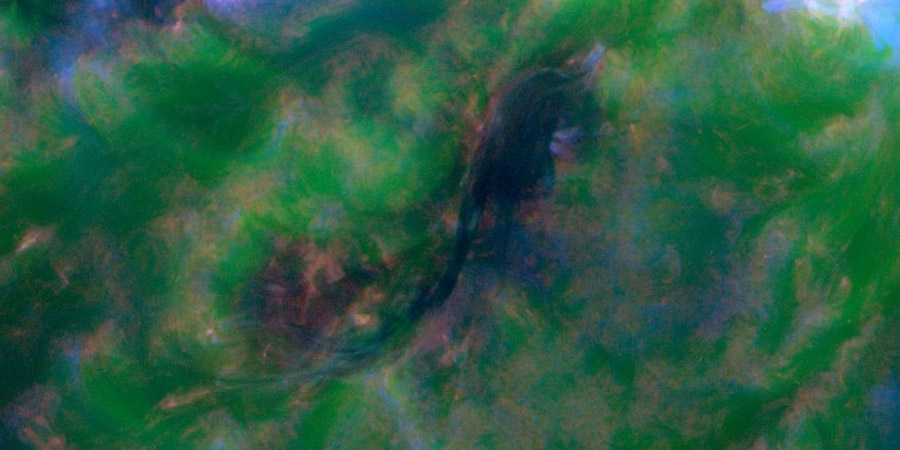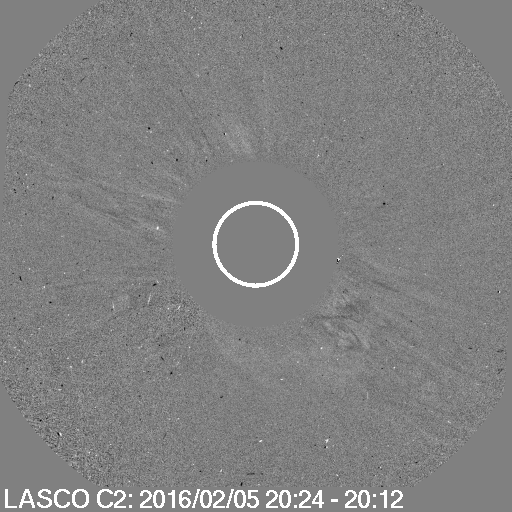Faint CME - glancing blow possible
Saturday, 6 February 2016 13:47 UTC

A small filament erupted last night from the Sun's southwestern quadrant. A faint coronal mass ejection was launched that could give us a glancing blow on 9 February.
This was far from a major eruption and only a faint partial halo coronal mass ejection was launched at a width of about 120 degrees as seen on SOHO/LASCO C2 coronagraph imagery. It is heading mostly south-west of Earth's orbit at a speed between 400 and 500km/s but a glancing blow can not excluded somewhere during the second half of 9 February. We do not expect geomagnetic storm conditions (G1 or higher) from this plasma cloud but it might be of interest for high latitude sky watchers. A major impact is unlikely and we should at most see a minor increase in the solar wind speed and the IMF parameters if the plasma cloud arrives at our planet. Not too much to get excited about but during these quiet space weather periods we are of course happy with anything the Sun provides us with!

Animation: SOHO/LASCO C2 coronagraph animation showing the faint partial halo CME.
Thank you for reading this article! Did you have any trouble with the technical terms used in this article? Our help section is the place to be where you can find in-depth articles, a FAQ and a list with common abbreviations. Still puzzled? Just post on our forum where we will help you the best we can!
Latest news
Latest forum messages
Support SpaceWeatherLive.com!
A lot of people come to SpaceWeatherLive to follow the Sun's activity or if there is aurora to be seen, but with more traffic comes higher server costs. Consider a donation if you enjoy SpaceWeatherLive so we can keep the website online!

Space weather facts
| Last X-flare | 2024/03/28 | X1.1 |
| Last M-flare | 2024/04/25 | M1.0 |
| Last geomagnetic storm | 2024/04/19 | Kp7 (G3) |
| Spotless days | |
|---|---|
| Last spotless day | 2022/06/08 |
| Monthly mean Sunspot Number | |
|---|---|
| March 2024 | 104.9 -19.8 |
| Last 30 days | 133.9 +26.6 |


